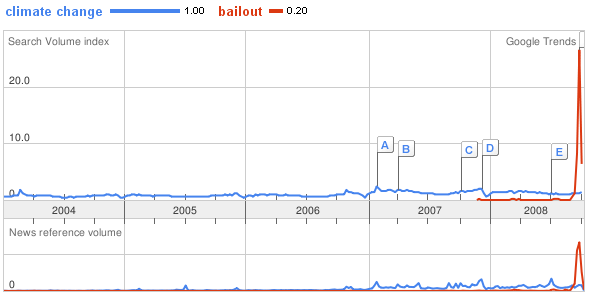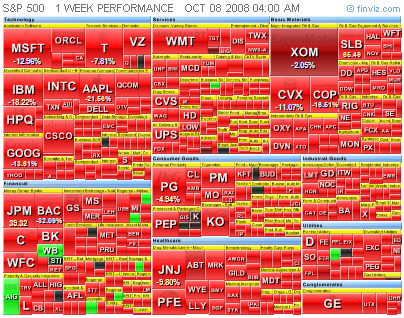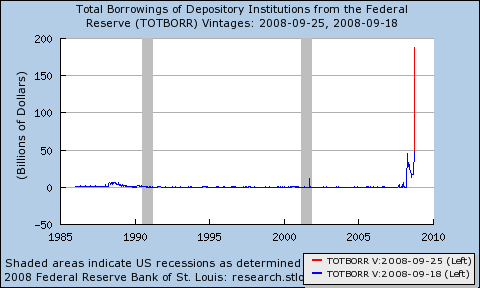MetaRoundup:
Several of the economics blogs I read have had useful roundups of bailout commentary. A few I find found useful:
Do we need to act now? on Economist’s View
9/26 Links on Economist’s View
NYT Economix’ analyst roundup
Greg Mankiw’s roundup of commentary
Update 9/29:
Real Time Economics’ Secondary Sources
Update 10/1:Â
Greg Mankiw with more commentary
Alternative Plans:
Economists Against the Paulson Plan
Brad de Long on Krugman on the Dodd plan
WSJ Real Time Economics’ Text of Lawmakers’ Agreement on Principles
Thomas Palley on Saving the Financial System
Marginal Revolution on the Republican plan to rescue mortgages instead of buying mortgage assets
Marginal Revolution with a Modest Proposal (finding and isolating toxic assets)
Update 9/27:
Marginal Revolution with substitute bridges
Greg Mankiw with a letter from Robert Shimer with a nice analysis, including problems with Paulson, the lemons problem, and the Diamond, Kaplan, Kashyap, Rajan & Thaler fix
Update 9/28:
Real Time Economics on securitization
Brad deLong on nationalization (the Swedish model)
Update 9/29:
The Big Picture with Stop Targeting Asset Prices
Marginal Revolution asks, is the Sweden plan better?




